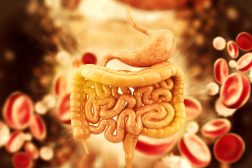Definition
noun
A carnivorous diet in which the diet of the organism is comprised wholly or predominantly of animal meat and organs
Supplement
Organisms that consume animal tissues in their diet have a so-called carnivorous diet. There are three types of carnivorous diet according to the percentage of animal flesh and organs in their diet: (1) hypercarnivorous diet, (2) mesocarnivorous diet, and (3) hypocarnivorous diet.
A hypercarnivorous diet is one that which their food is comprised of 70% (or more) animal meat. (See: mesocarnivorous diet and hypocarnivorous diet for comparison) Organisms with a hypercarnivorous diet are called hypercarnivores (i.e. from the Greek hyper-, which indicates over or above).
Examples of animals with a carnivorous diet include lions, tigers, dolphins, snakes, eagles, sharks, cats, octopuses, sea stars, salmons, and many others. Some of them may eat a few amounts of plant materials in their diet on certain occasions. Cats, for instance, eat mostly animal flesh and organs. However, there are times when they eat grass. Although there is no conclusive explanation to this, it is assumed that this may be related to the efficacy of plant materials as an emetic or natural laxative. Ingesting plant materials helps carnivorous animals, such as cats, to spew ingested animal parts that are indigestible (e.g. fur, bones, etc.).
Compare:
- mesocarnivorous diet
- hypocarnivorous diet
See also:
Related term(s):
- hypercarnivore
- hypercarnivorous







